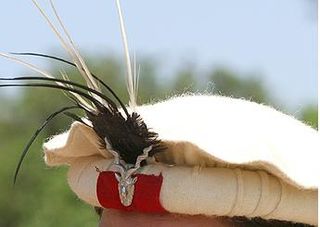
The Indo-Aryan languages are a branch of the Indo-Iranian languages in the Indo-European language family. As of the early 21st century, they have more than 800 million speakers, primarily concentrated in India, Pakistan, Sri Lanka, Bangladesh, Nepal and Maldives. Moreover, apart from the Indian subcontinent, large immigrant and expatriate Indo-Aryan–speaking communities live in Northwestern Europe, Western Asia, North America, the Caribbean, Southeast Africa, Polynesia and Australia, along with several million speakers of Romani languages primarily concentrated in Southeastern Europe. There are over 200 known Indo-Aryan languages.
Gandhāra was an ancient Indo-Aryan civilization centered in the present-day north-west Pakistan and north-east Afghanistan, roughly in the northwestern part of South Asia. The core of the region of Gandhara was the Peshawar and Swat valleys, though the cultural influence of "Greater Gandhara" extended across the Indus river to the Taxila region in Potohar Plateau and westwards into the Kabul valley in Afghanistan, and northwards up to the Karakoram range.

The Yusufzai or Yousafzai, also referred to as the Esapzai, or Yusufzai Afghans historically, are one of the largest tribes of ethnic Pashtuns. They are natively based in the northern part of Khyber Pakhtunkhwa, to which they migrated from Kabul during the 16th century, but they are also present in smaller numbers in parts of Afghanistan, including Kunar, Kabul, Kandahar and Farah. Outside of these countries, they can be found in Ghoriwala District Bannu, Balochistan Sibi (Akazai), Chagai (Hassanzai) and Rohilkandh.

Gāndhārī is a Prakrit language found mainly in texts dated between the 3rd century BCE and 4th century CE in the region of Gandhāra, located in present day Pakistan's Potohar region. The language was heavily used by the former Buddhist cultures of Central Asia and has been found as far away as eastern China, in inscriptions at Luoyang and Anyang.

The Dardic languages, or Hindu-Kush Indo-Aryan languages, are a group of several Indo-Aryan languages spoken in northern Pakistan, northwestern India and parts of northeastern Afghanistan. This region has sometimes been referred to as Dardistan.
The Jadoon are a Pashtun tribe residing mostly in the Abbottabad and Haripur Kohistan Swat Azad Kashmirdistricts of the Hazara Division, and partly in the Swabi district of the Khyber Pakhtunkhwa province of Pakistan. Muttahida Karwan-e-Jadoon Pakistan Jadoon Ittehad pakistan White House Rajoya Jadoon Chowck Karachi

Swat District, also known as the Swat Valley, Switzerland of Pakistan, is a district in the Malakand Division of Khyber Pakhtunkhwa, Pakistan. With a population of 2,309,570 per the 2017 national census, Swat is the 15th-largest district of Khyber Pakhtunkhwa with many popular tourist attractions.

Dardistan refers to a region where Dardic languages are spoken. The terms "Dardic" and "Dardistan" are not indigenous to the region, and were coined by Gottlieb Wilhelm Leitner. The legitimacy of the term has been called into question. The region also includes a number of non-Dardic peoples and languages.

Shina is a Dardic language of Indo-Aryan language family spoken by the Shina people. In Pakistan, Shina is the major language in Gilgit-Baltistan spoken by an estimated 1,146,000 people living mainly in Gilgit-Baltistan and Kohistan. A small community of Shina speakers is also found in India, in the Guraiz valley of Jammu and Kashmir and in Dras valley of Ladakh. Outliers of Shina language such as Brokskat are found in Ladakh, Kundal Shahi in Azad Kashmir, Palula and Sawi in Chitral, Ushojo in the Swat Valley and Kalkoti in Dir.

The pakol or pakul is a soft, flat, rolled-up, round-topped men's cap, usually worn in Afghanistan and Pakistan. It is typically made of wool and found in a variety of earthy colours, such as brown, black, grey, ivory, or dyed red using walnut. The pakol is believed to have originated in Chitral, or Gilgit-Baltistan in Pakistan.

Torwali is an Indo-Aryan language spoken by the Torwali people, and concentrated in the Bahrain and Chail areas of the Swat District in Pakistan. The Torwali language is said to have originated from the pre-Muslim communities of Swat. It is the closest modern Indo-Aryan language still spoken today to Niya, a dialect of Gāndhārī, a Middle Indo-Aryan language spoken in the ancient region of Gandhara.
Gawri (ګاوری), also known as Kalami (کالامي), or Bashkarik, is an Indo-Aryan language spoken in Swat Kohistan region in the upper Swat District and in the upper Panjkora river valley of Upper Dir District, Khyber Pakhtunkhwa, Pakistan.

Hindkowans, also known as the Hindki, is a contemporary designation for speakers of Indo-Aryan languages who live among the neighbouring Pashtuns, particularly the speakers of various Hindko dialects of Western Punjabi (Lahnda). The origins of the term refer merely to the speakers of Indo-Aryan languages rather than to any particular ethnic group. The term is not only applied to several forms of "Northern Lahnda" but also to the Saraiki dialects of the districts of Dera Ghazi Khan, Mianwali, and Dera Ismail Khan, which border the southern Pashto-speaking areas.

Indus Kohistani or simply Kohistani is an Indo-Aryan language spoken in the former Kohistan District of Pakistan. The language was referred to as Maiyã (Mayon) or Shuthun by early researchers, but subsequent observations have not verified that these names are known locally.
Tirahi are Indo-Aryan people who are native and original inhabitants of Tirah valley. They are closely related to their Dardic neighbours and speak Tirahi language, a nearly extinct if not already extinct Indo-Aryan language which may still be spoken by older adults, who are likewise fluent in Pashto, in a few villages in the southeast of Jalalabad in Nangarhar Province, Afghanistan. They were the previous inhabitants of Tirah and the Peshawar Valley in modern-day Khyber Pakhtunkhwa, Pakistan.

The Shina or Gilgitis are an Indo-Aryan ethnolinguistic group primarily residing in Gilgit–Baltistan and Indus Kohistan in Pakistan, as well as in the Dras Valley and Kishenganga Valley (Gurez) in the northern region of Jammu and Kashmir and Ladakh in India. They speak an Indo-Aryan language, called Shina and their geographic area of predominance is referred to as Shenaki.
Hazarewals or Hazarawals also known as Hazara is term used for the multi-ethnic predominantly Hindko and Shina speaking community belonging to the Hazara region of Khyber Pakhtunkhwa.Hindko speaking Hazarewals include the Swatis, Jadoons, Karlals, Abbasis, Sayyids, Awans, Mughals, Tanolis, Gujjars, Turks, Tanolis, Qureshis and Khokhars.
Tirahi is a nearly extinct if not already extinct Indo-Aryan language spoken in a few villages in the southeast of Jalalabad in the Nangarhar Province of eastern Afghanistan. It is spoken by older adults, who are likewise fluent in Pashto.
Indus Kohistanis are an Indo-Aryan ethnolinguistic group speaking the Indus Kohistani language. They are located in Indus Kohistan, in northern Pakistan.
Yaghistan was a key frontier region between Afghanistan and British India.












